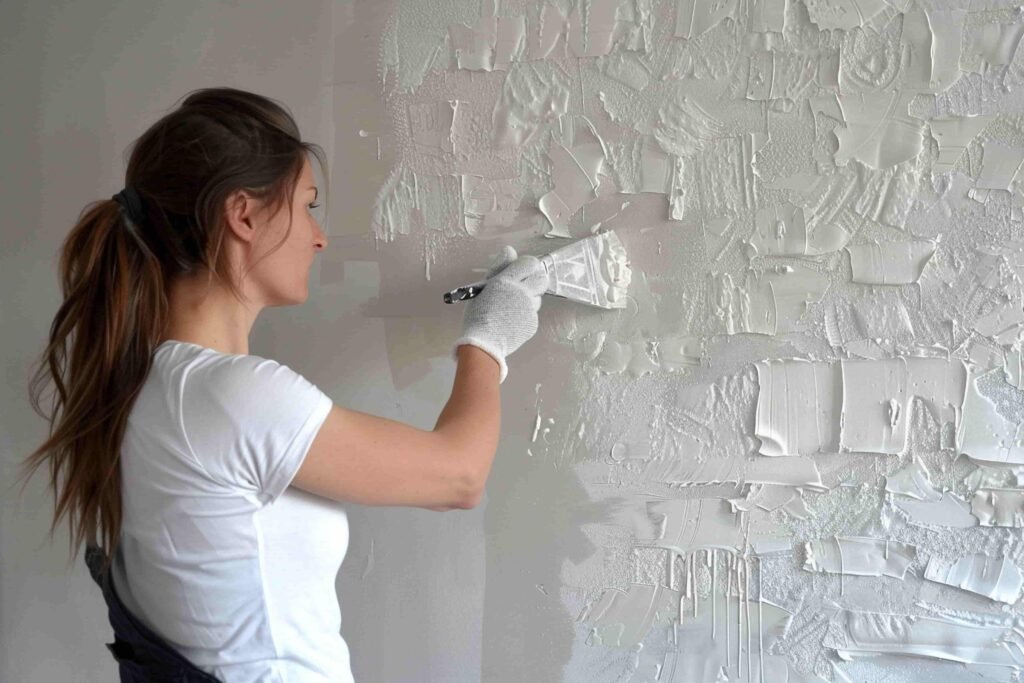
Wall putty is a fine powder, mixed with water to form a smooth paste, applied before painting. It fills imperfections, enhances adhesion, and ensures a flawless finish.
Interior putty prioritizes smoothness, low shrinkage, and mold resistance, often using ash calcium or light fillers.
Exterior putty, however, demands weatherproofing, crack resistance, and durability, relying on white cement, polymers, and heavy calcium.
Understanding these differences ensures optimal performance—whether for a cozy living room or a high-rise facade. Ready to dive deeper? Let’s explore!
Interior Wall Putty

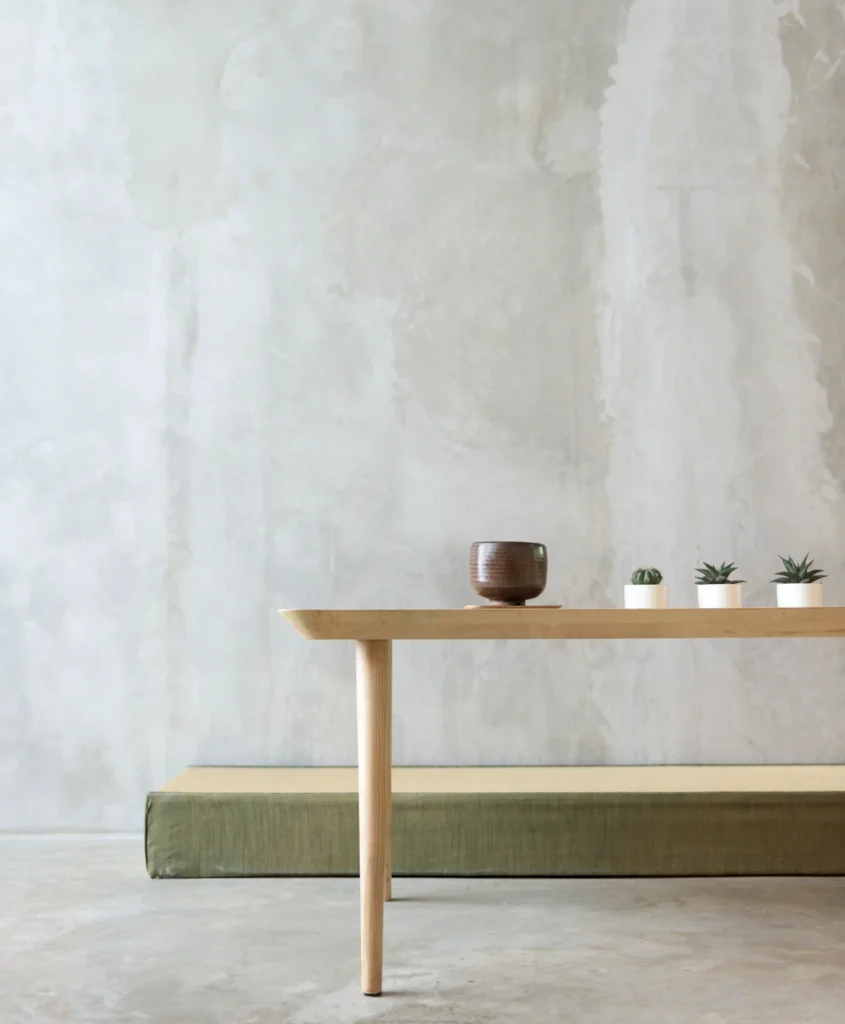
Interior wall putty is a fine finishing compound specifically designed for application on walls and ceilings inside buildings. Its primary purpose is to create an exceptionally smooth, uniform surface over substrates like plaster, concrete, or drywall before painting.
Crucially, interior putties often have lower levels of Volatile Organic Compounds (VOCs) or are zero-VOC to maintain healthy indoor air quality. They may also include additives to inhibit mold and mildew growth in humid interior environments like bathrooms.
However, they lack the robustness to withstand outdoor weather conditions like rain, UV radiation, or significant temperature fluctuations and should never be used externally.
Exterior Wall Putty
Exterior wall putty is a durable, weather-resistant coating formulated for application on the outer surfaces of buildings. Its core function is to fill minor imperfections and create a smooth, uniform base on substrates like cement, plaster, or concrete before applying exterior paints or coatings.
Key characteristics include superior water resistance to prevent moisture ingress, excellent adhesion to outdoor surfaces, flexibility to accommodate thermal expansion and contraction without cracking, and strong resistance to degradation from ultraviolet (UV) sunlight.
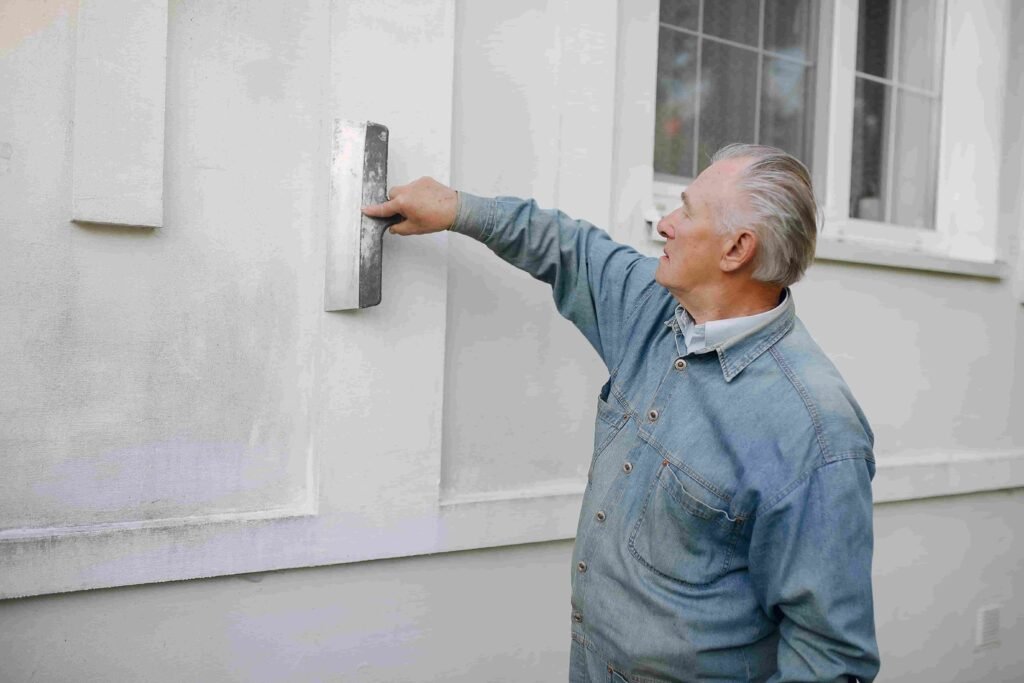
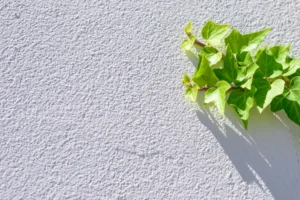
Interior vs Exterior Wall Putty: What's the Difference
1. Purpose & Environment:
Interior Putty: Designed exclusively for indoor use on walls and ceilings. It operates in a relatively controlled environment protected from the weather.
Exterior Putty: Designed exclusively for outdoor use on building facades. It must withstand harsh, constantly changing weather conditions (rain, snow, sun, wind, freeze-thaw cycles).
2. Key Properties:
Interior Putty:
Smoothness & Sandability: Prioritizes achieving an ultra-smooth, flawless finish that’s easy to sand.
Low/Zero VOCs: Formulated to minimize or eliminate Volatile Organic Compounds for better indoor air quality.
Mildew Resistance: Often includes additives to inhibit mold and mildew growth in humid interior spaces (e.g., bathrooms and kitchens).
Whiteness: High whiteness enhances the true color of topcoats.
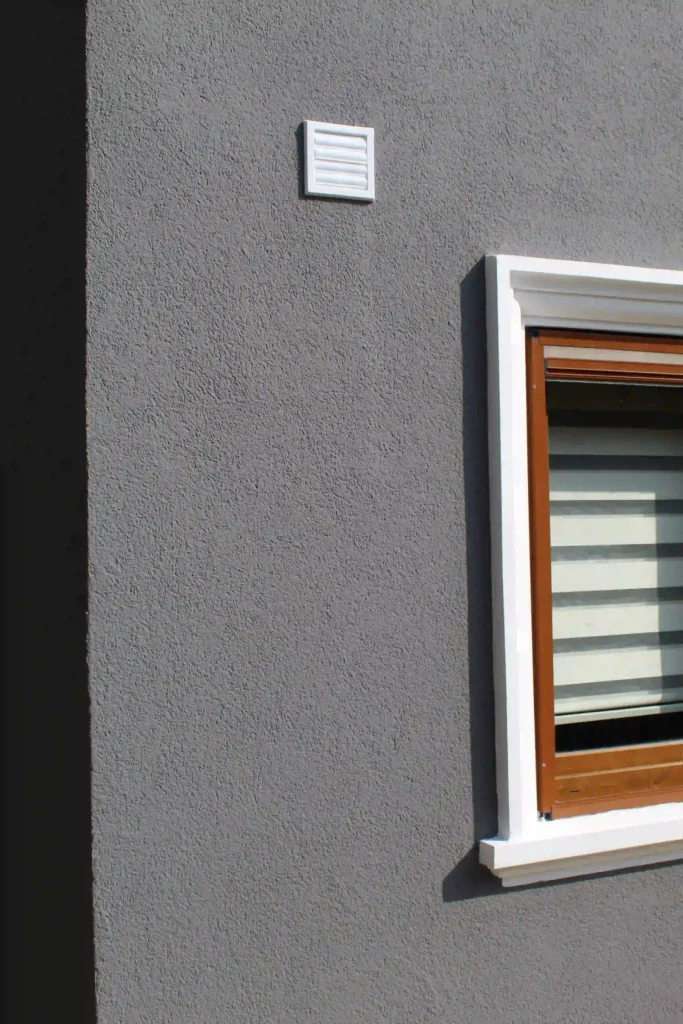
Exterior Putty:
Water Resistance: Crucial. Forms a tight, waterproof barrier to prevent moisture ingress into the substrate, which can cause damage and paint failure.
Weather Resistance: Highly resistant to UV radiation (sunlight), rain, temperature extremes, and pollution.
Flexibility & Elasticity: Must expand and contract with the building substrate during temperature changes without cracking.
Adhesion & Durability: Stronger adhesion to tough exterior substrates (like cement plaster) and overall greater durability against physical stress.
3. Binders & Formulation:
Interior and exterior wall putties feature distinctly different formulations tailored to their specific environments. Interior putties prioritize smoothness, easy sanding, and low VOCs for indoor air quality, while exterior putties demand superior flexibility, water resistance, and UV protection to withstand harsh outdoor conditions. They are never interchangeable.
The following is a detailed description of the interior and exterior wall putty formula.
3.1 Interior Wall Putty Formula
| Interior Wall Putty Ingredient | Dosage |
|---|---|
| Ash Calcium Powder | 20-30% |
| Heavy Calcium Powder | 65-75% |
| Hydroxypropyl Methyl Cellulose | 0.25-0.4% |
| Redispersible Polymer Powder | 1.5-3.0% |
3.1.1 Ash Calcium Powder
Ash calcium powder (15-30%) serves as an economical filler in interior wall putty formulations, improving bulk density and workability. Its moderate fineness (30-50μm) helps balance smoothness and structural strength while reducing material costs.
When combined with Heavy Calcium powder and cellulose ethers, it enhances the putty’s plasticity and standability without compromising adhesion. The powder’s slight alkalinity also contributes to mold resistance, making it suitable for interior wall applications where cost-effective performance is prioritized over premium whiteness.
3.1.2 Heavy Calcium Powder
Heavy calcium powder (calcium carbonate, 200-800 mesh) is a crucial filler in interior wall putty, enhancing smoothness, workability, and cost efficiency. Its fine particle size improves surface finish, while its chemical stability ensures durability.
When combined with additives like HPMC and redispersible polymer powder, it forms a high-performance putty with excellent crack resistance and a smooth final surface, ideal for interior wall applications.
3.1.3 Redispersible Polymer Powder
Redispersible Polymer Powder (RDP) is a crucial additive in interior wall putty formulations, enhancing flexibility, adhesion, water resistance, and durability.
Typically made from vinyl acetate-ethylene (VAE) or acrylic copolymers, RDP improves the performance of cement-based and polymer-modified putties.
Functions of Redispersible Polymer Powder in Interior Putty
Adhesion Enhancement: Improves bonding to substrates (concrete, plaster, gypsum).
Flexibility & Crack Resistance: Reduces shrinkage cracks by forming a flexible polymer film.
Water Resistance: Enhances moisture resistance, preventing blistering or peeling.
Workability: Improves spreadability and smoothness during application.
Impact & Abrasion Resistance: Increases durability for long-lasting finishes.
Notes on Redispersible Polymer Powder:
RDP Type:
VAE (Vinyl Acetate-Ethylene): Good balance of flexibility and adhesion (common in putty).
Acrylic-Based: Better water resistance and UV stability (premium putties).
Dosage:
1–3% for standard putty (improves workability & adhesion).
3–5% for high-flexibility or waterproof putty.
3.1.4 HPMC (Hydroxypropyl Methyl Cellulose)
Hydroxypropyl Methyl Cellulose (HPMC) is a key additive in interior wall putty formulations, serving as a thickener, water-retention agent, binder, and workability enhancer. Its multifunctional properties improve the performance and application of putty, ensuring smooth finishes and durability.
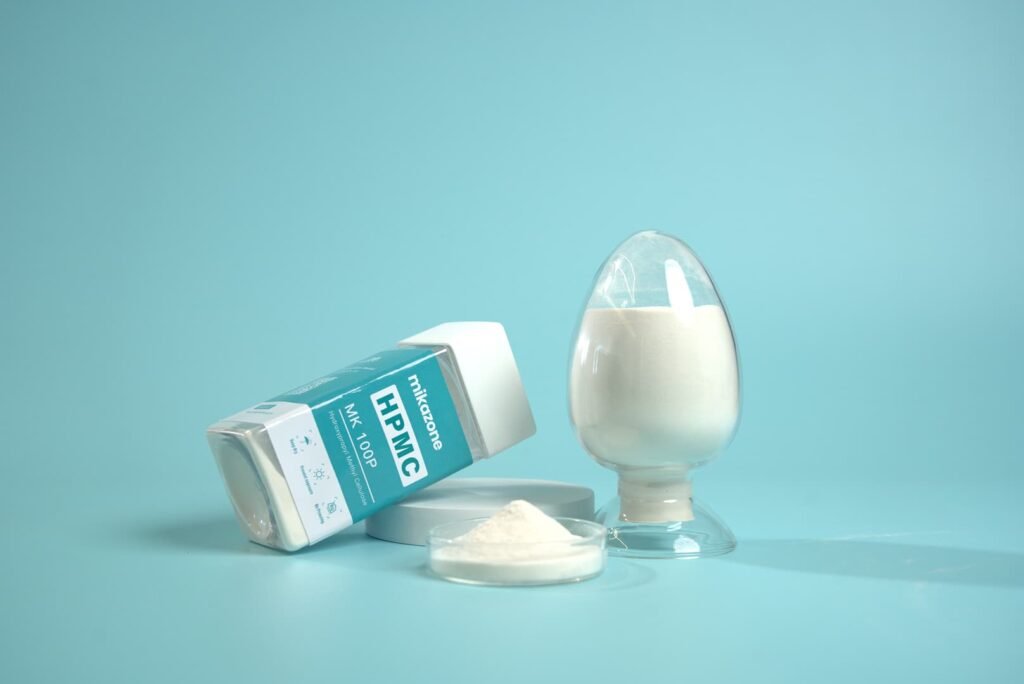
Key Functions of HPMC in Interior Putty
Water Retention: Slows down water evaporation, ensuring proper cement/polymer hydration and reducing cracks.
Workability: Enhances spreadability and adhesion to substrates (e.g., concrete, plaster).
Thickening: Adjusts viscosity to prevent sagging on vertical surfaces.
Film Formation: Forms a flexible layer to resist shrinkage and cracking.
Open Time: Extends working time for easier application.
Notes on HPMC:
HPMC Grade:
Lower viscosity grades for smoother application;
Higher grades for thicker consistency.
Dosage:
Typically 0.2–0.5% of total weight. Excessive HPMC may delay drying.
3.2 Exterior Wall Putty Formula
| Exterior Wall Putty Ingredient | Dosage |
|---|---|
| White Cement | 30-35% |
| Heavy Calcium Powder | 60-65% |
| Redispersible Polymer Powder | 2.5-3.5% |
| Hydroxypropyl Methyl Cellulose | 0.25-0.4% |
| Polypropylene Fiber | 0.1-0.5% |
3.2.1 White Cement
3.2.2 Heavy Calcium Powder (0.045mm)
3.2.3 Redispersible Polymer Powder
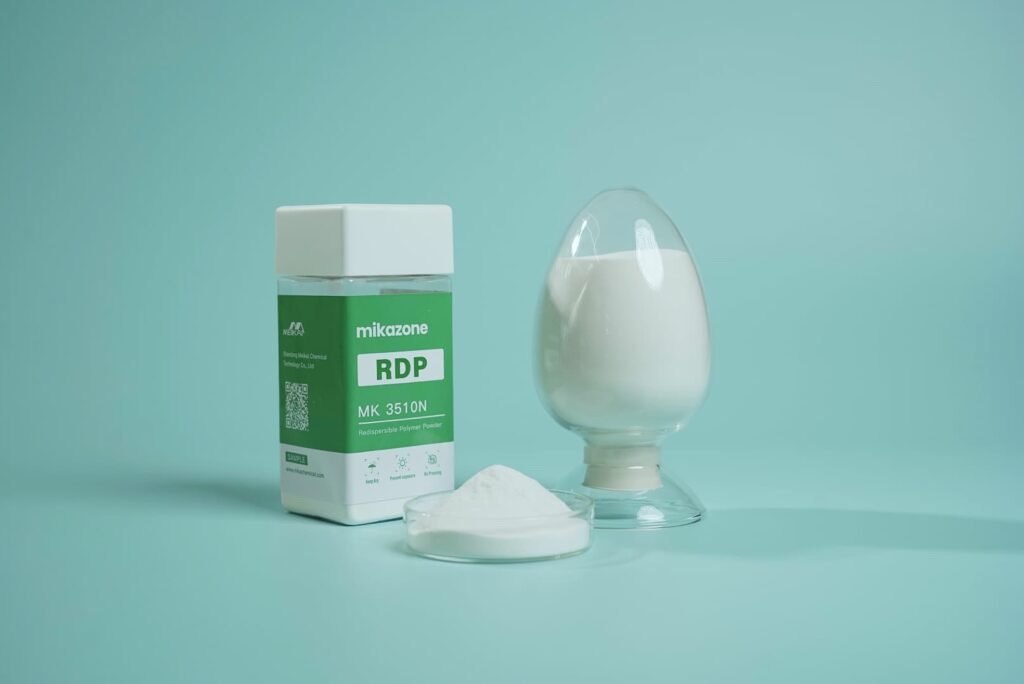
Redispersible Polymer Powder (RDP) is a vital additive in exterior wall putty formulations, significantly enhancing flexibility, adhesion, water resistance, and durability against harsh weather conditions. Typically composed of vinyl acetate-ethylene (VAE) or acrylic copolymers, RDP forms a flexible polymer film upon drying, improving the long-term performance of cement-based and polymer-modified exterior putties.
Key Functions of Redispersible Polymer Powder in Exterior Wall Putty Formula
Enhanced Adhesion: Strong bonding to substrates (concrete, brick, EIFS).
Crack Resistance: Reduces shrinkage cracks caused by thermal expansion/contraction.
Water & Weather Resistance: Improves resistance to rain, UV, and freeze-thaw cycles.
Flexibility: Accommodates structural movements without cracking.
Impact & Abrasion Resistance: Increases durability for long-lasting finishes.
Notes on Redispersible Polymer Powder:
RDP Type:
VAE (Vinyl Acetate-Ethylene): Cost-effective, good flexibility (common in exterior putty).
Acrylic-Based: Superior water/UV resistance (premium formulations).
Dosage:
3–5% for standard exterior putty.
5–8% for high flexibility or extreme weather resistance.
3.2.4 Hydroxypropyl Methyl Cellulose
Hydroxypropyl Methyl Cellulose (HPMC) is a critical additive in exterior wall putty formulations, providing water retention, workability, adhesion, and crack resistance.
Unlike interior putty, exterior formulations require enhanced durability against weathering, rain, and temperature fluctuations, making HPMC’s properties even more vital.
Key Functions of HPMC in Exterior Putty
Water Retention: Slows water evaporation, ensuring proper cement hydration and reducing shrinkage cracks.
Workability & Sag Resistance: Improves spreadability and prevents sagging on vertical surfaces.
Adhesion Enhancement: Strengthens bond to substrates (concrete, EIFS, brick).
Crack Resistance: Forms a flexible film to accommodate thermal expansion/contraction.
Open Time Extension: Allows longer working time in hot/dry climates.
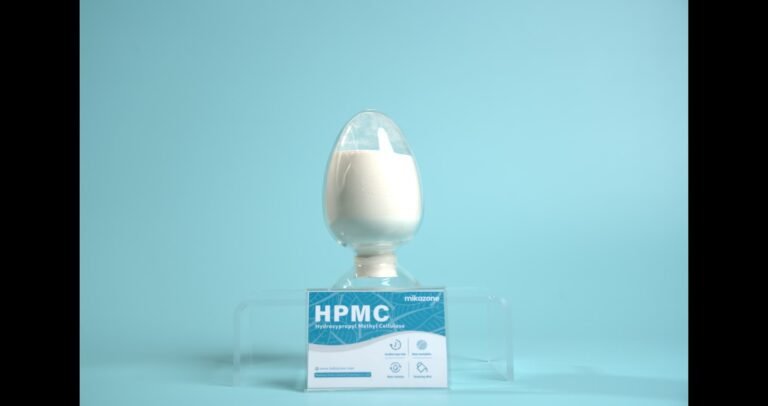
3.2.5 Polypropylene Fiber
Key Functions of Polypropylene Fiber in Exterior Putty
Prevents micro-cracks caused by drying shrinkage and thermal expansion.
Enhances tensile strength without compromising flexibility.
Improves impact resistance against mechanical abrasion.
Reduces water permeability by bridging micro-pores in the putty.
Notes on PP Fiber Dosage:
0.1–0.3%: Standard crack resistance for moderate climates.
0.3–0.5%: High-performance reinforcement (harsh weather, high shrinkage risk).
Exceeding 0.5% may reduce workability.
Summary
Wall putty is essential for creating a smooth, durable surface before painting. Both interior and exterior putties share common ingredients like fillers (calcium carbonate, ash calcium) and binders (white cement or gypsum). They improve adhesion, reduce cracking, and enhance paint performance. However, their formulations differ significantly based on functional requirements.
Interior putty focuses on workability, smoothness, and mold resistance, often using lightweight fillers and cellulose ethers (e.g., HPMC) for better spreadability.
Exterior putty, however, must endure UV exposure, rain, and temperature fluctuations. It requires stronger binders, redispersible polymer powder (RPP) for flexibility, and polypropylene fibers for crack resistance.
At Mikazone, we supply high-quality additives like Redispersible Polymer Powder (RPP), Hydroxypropyl Methyl Cellulose (HPMC), and Polypropylene Fiber to enhance putty performance. We also offer customized formulations to meet specific project needs—whether for a delicate interior finish or a tough exterior coating. Contact us today for tailored solutions!
